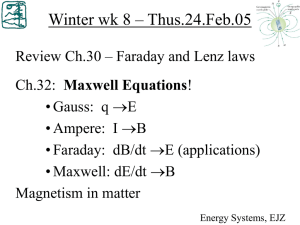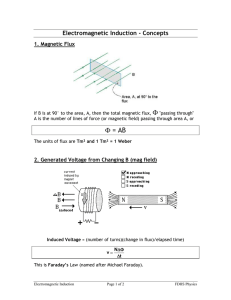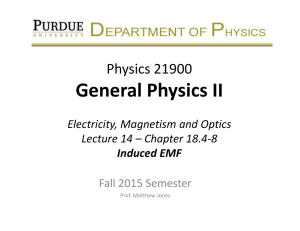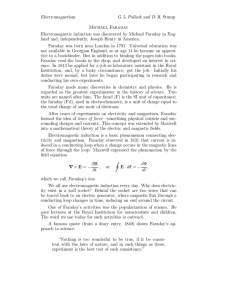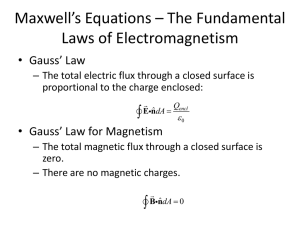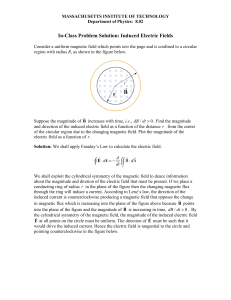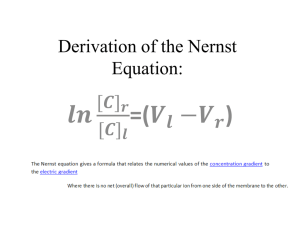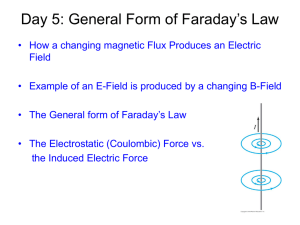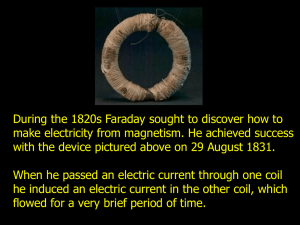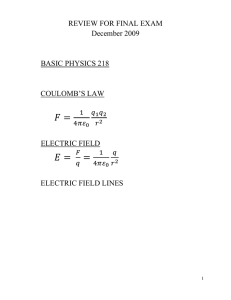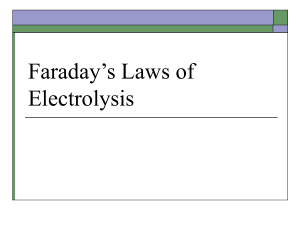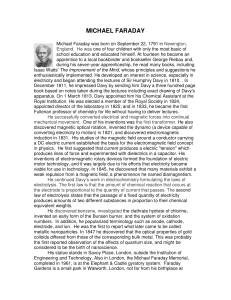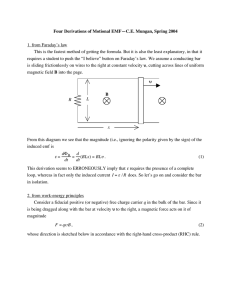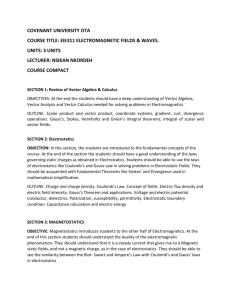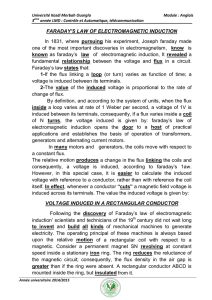Faraday’s Law
advertisement
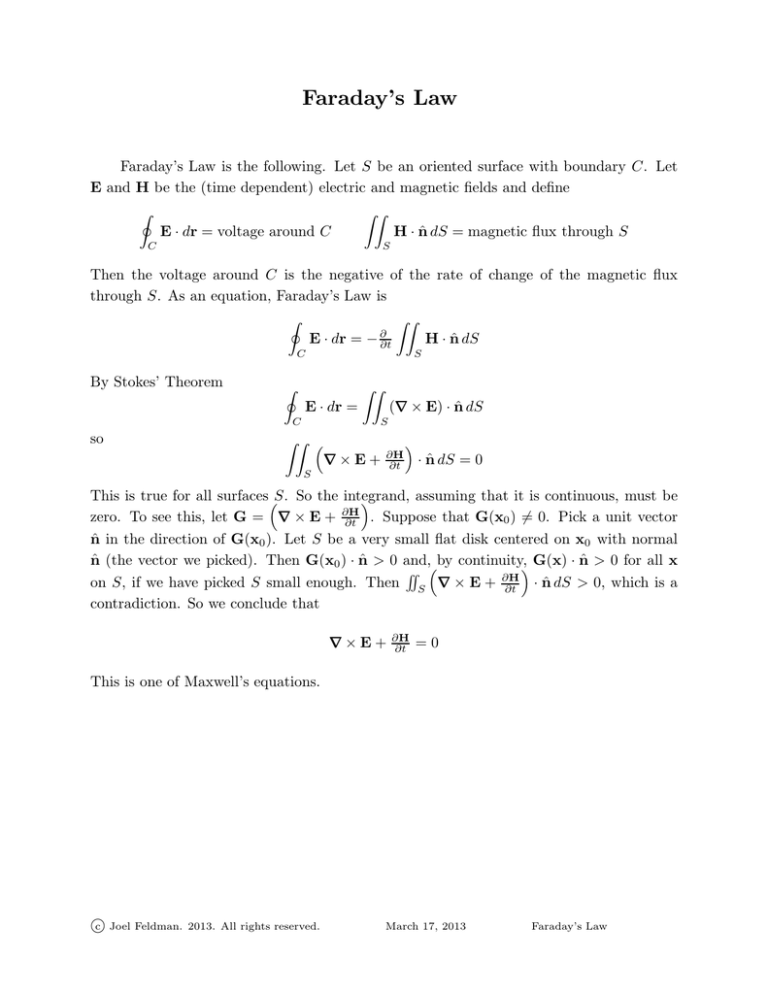
Faraday’s Law Faraday’s Law is the following. Let S be an oriented surface with boundary C. Let E and H be the (time dependent) electric and magnetic fields and define I E · dr = voltage around C C ZZ H · n̂ dS = magnetic flux through S S Then the voltage around C is the negative of the rate of change of the magnetic flux through S. As an equation, Faraday’s Law is I ZZ ∂ H · n̂ dS E · dr = − ∂t S C By Stokes’ Theorem I E · dr = C so ZZ (∇ ∇ × E) · n̂ dS S ZZ ∇×E+ ∂H ∂t S · n̂ dS = 0 This is true for all surfacesS. So the integrand, assuming that it is continuous, must be ∂H zero. To see this, let G = ∇ × E + ∂t . Suppose that G(x0 ) 6= 0. Pick a unit vector n̂ in the direction of G(x0 ). Let S be a very small flat disk centered on x0 with normal n̂ (the vector we picked). Then G(x0 ) · n̂ > 0 and,by continuity, G(x) · n̂ > 0 for all x RR on S, if we have picked S small enough. Then S ∇ × E + ∂H · n̂ dS > 0, which is a ∂t contradiction. So we conclude that ∇×E+ ∂H ∂t =0 This is one of Maxwell’s equations. c Joel Feldman. 2013. All rights reserved. March 17, 2013 Faraday’s Law



